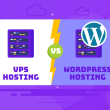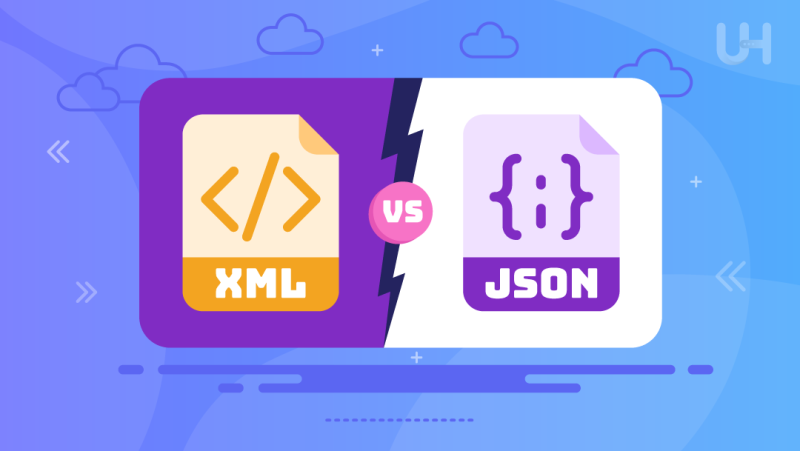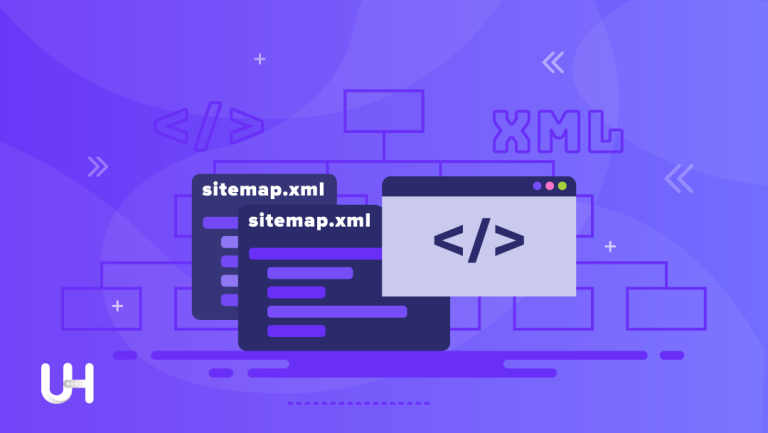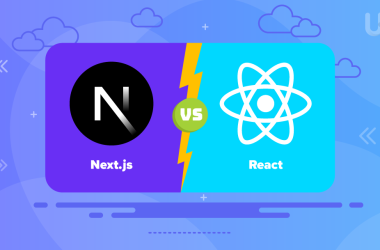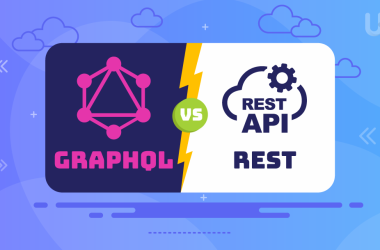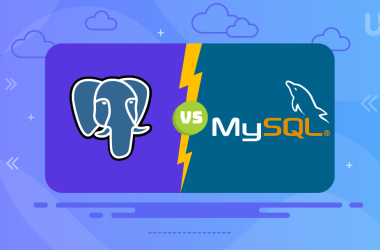XML vs JSON are probably the most applied technologies in data interchange formats. XML stands for eXtensible Markup Language, whereas JSON stands for JavaScript Object Notation. Both XML and JSON enable data sharing between systems; hence, they are critical technologies in web development and API integration.
Developers should understand how the formats differ and where they are alike to make necessary decisions on which to use in their projects. In this detailed post, we will discuss what JSON and XML are, their advantages and disadvantages, similarities, and key differences.
What is JSON?
JSON stands for JavaScript Object Notation, which is a lightweight, easily human-readable and machine-writable, parseable, and generatable data interchange format. Jason was initially derived from JavaScript; however, it became totally language-independent and is used by many programming languages today. It represents the data in key-value pairs, arrays, and objects, which makes it very suitable for data transmission between a 10Gbps dedicated server and a web application.
Advantages
- Lightweight: JSON has less data overall compared to XML, making it faster to parse and transmit.
- Readability: JSON is human-readable and human-writable since the language or format has been designed for ease of use in both reading and writing.
- Integration with JavaScript: Since JSON is the native format of JavaScript, it becomes very handy for web applications.
- Performance: JSON parsing is generally faster than XML parsing because of its simpler syntax and data structure.
- Compatibility: Most current programming languages and frameworks have front-end libraries that support JSON.
- Flexibility: JSON’s structure is pretty flexible, thus allowing manipulation or ease of use in any dynamic application.
Disadvantages
- Few data types: JSON supports fewer types of data than XML, which can be a limitation in some situations.
- No comment support: Comments are not natively supported in JSON, and documenting within the data is unmanageable.
- Less verbosity: Lightweight is a good property, but the less verbosity of JSON is sometimes negative in terms of less self-described data compared to XML.
- Security: JSON is simple and can, therefore, be insecure. For example, it can be weak to injection when not properly handled.
- No schema validation: JSON lacks built-in schema validation, making it more challenging to ensure data integrity.
Example
{"UltaHost":[
{ "firstName":"Deen", "lastName":"Doughouz" },
{ "firstName":"Elin", "lastName":"Doughouz" }
]}This example demonstrates the general syntax of the JSON.
What is XML?
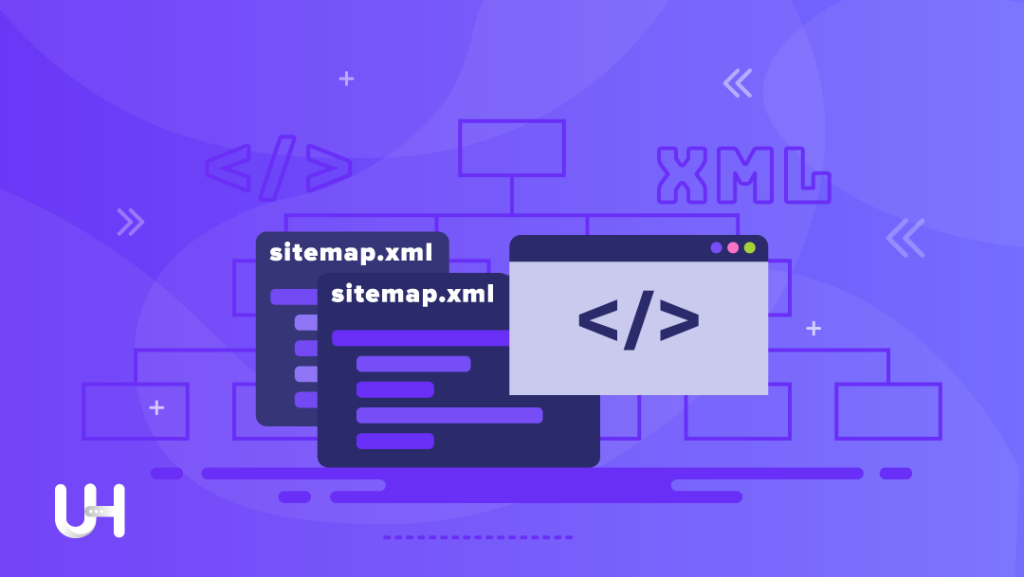
XML stands for eXtensible Markup Language and is used as a markup language to store and carry data. It is human-readable and machine-readable, thus allowing customized tags to be defined for structuring data in a hierarchical form. It has been designed to be self-descriptive, meaning that it allows the structure of the data itself to bear information context about its contents.
Advantages
- Self-Descriptive: Because XML tags are named, the structure of the data is immediately understandable.
- Flexibility: XML can represent even the most complex data structures and has many built-in data types.
- Validation: Support exists for creating an XML schema definition (XSD) and a data validation process in accordance with predefined rules.
- Comments: With XML, it is possible to include comments within the data themselves, which is useful for documenting and explaining parts of the data.
- Namespaces: XML does support namespaces, and this prevents possible conflicts between the names of elements.
- Extensibility: XML is very extensible; a number of specializations of markup languages can quickly be realized for some specific needs.
- Widely Used in Enterprises: XML has major applications in enterprise-level applications and industries where strict data validation and representation of complex data are required.
Disadvantages
- Verbosity: XML is more verbose than JSON. Because of this, file sizes are typically larger with larger parsing times.
- Complexity: XML’s syntax and structure can be more complex, unlike JSON.
- Performance: Generally, parsing is slower and more resource-intensive due to the verbose nature of XML.
- Overhead: Extra tags in XML add a certain overload to the data itself, making it further inefficient for storage and transmission.
- Transformation: This will convert the XML data into other formats, which can be difficult in certain cases and may involve additional transformation steps.
Example
<?xml version="1.0" encoding="UTF-8" ?>
<root>
<student>
<id>01</id>
<name>Elin</name>
<lastname>Doughouz</lastname>
</student>
<student>
<id>02</id>
<name>Deen</name>
<lastname>Doughouz</lastname>
</student>
</root>This example demonstrates the general syntax of the XML file.
Elevate Your Data Handling & Web Performance Today!
Ready to supercharge your data operations? Whether you choose XML or JSON, you need a fast and reliable server to ensure optimal performance. UltaHost’s Fast VPS offers unmetered bandwidth, full root access, and top-notch application security.
Similarities between XML vs JSON
Both XML and JSON relate to the representation of structured data and are relevant in very wide usage within interchange applications between systems. They have several key similarities:
- Data Interchange Formats: XML and JSON are designed to exchange data between different systems and applications.
- Text-based: Both formats are represented using plain text; hence, they are easily readable and editable by human beings.
- Language-neutral: XML and JSON are known to be language-independent and, hence, can work with several programming languages.
- Hierarchy: Both can be used to describe data in a hierarchical way, allowing for complex nested data structures.
- Human-readable: Both formats are human-readable, though XML is usually more verbose than JSON.
- Complex Data Support: XML and JSON support complex data structures, including nested elements and arrays.
- Extensive use in web services: Both formats are used mainly in web hosting services and APIs for data interchange.
Difference between JSON vs XML
Below is a table summarizing the key differences between JSON and XML:
| Feature | JSON | XML |
| Syntax | Lightweight and easy to read | Verbose and self-descriptive |
| Data Types | Supports strings, numbers, arrays, objects | Supports a wide range of data types |
| Readability | More human-readable | Less human-readable due to verbosity |
| Integration | Natively supported by JavaScript | Requires parsing libraries for most uses |
| Performance | Generally, faster parsing and transmission | Slower due to verbosity and complexity |
| Schema Support | No native schema support | Supports XSD for schema validation |
| Comments | It does not support comments | Supports comments |
| Namespaces | No namespace support | Supports namespaces |
| Use Cases | Web APIs, configurations, data interchange | Complex data representation, document storage |
When To Use: XML vs JSON
If you want to save different kinds of data with a lot of variables, then XML is your choice. It works very well in error-checking within complex data since it was designed not for human-readable data storage but more so machine-readable. It has also matured; thus, the tools and libraries that support it make it compatible with legacy systems.
On the other hand, JSON was designed for data transfer. It is a much simpler and compact format that provides better performance and faster communication. Hence, JSON will be best suited for Application Programming Interfaces (APIs), mobile applications, and data storage, while XML can be used in complex document structures that require exchanging data.
Conclusion
The choice between JSON or XML depends on the needs of the project. JSON becomes the more favored choice over XML for web applications because of its lightness, self-descriptive nature, readability, alignment with JavaScript Framework, and support for faster parsing. At the same time, XML is more appropriate for applications with complex data representation and those that require data validation. An added advantage of XML is that it is self-descriptive and has many features. Being aware of the strengths and limitations of both formats will help the developer make effective choices so that the format chosen best suits the requirements of his application.
Choosing between XML vs JSON is crucial for your application’s performance. You need UltaHost’s Dedicated Server Hosting for the best results to support your data operations. Get unparalleled power and flexibility for your app’s efficiency.
FAQ
Why is JSON more efficient for web applications than XML?
JSON is lightweight and has a simpler syntax, leading to faster parsing and reduced data transmission times. Its seamless integration with JavaScript enhances efficiency in web development.
How do XML and JSON handle comments within data?
XML supports comments within the data, aiding documentation. JSON does not natively support comments, requiring external documentation or workarounds.
Can XML and JSON be used together in an application?
Yes, an application can use JSON for fast data interchange and XML for configuration files or complex data structures, leveraging the strengths of both formats.
What are the security considerations for JSON and XML?
If not properly sanitized, JSON is vulnerable to injection attacks. XML can be attacked through XXE and XML bombs. Proper validation and parsing techniques are essential for both.
How does XML’s support for namespaces compare to JSON?
XML supports namespaces to avoid element name conflicts, which is useful in complex documents. JSON lacks a built-in mechanism for namespaces, limiting name differentiation in complex data structures.




